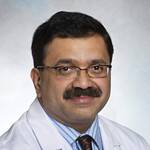
25 Jul Early Brigham Study Uses Stem Cells To Restore Ovarian Function
MedicalResearch.com Interview with:

Dr. Anchan
Raymond M. Anchan, MD, Ph.D.
Director, Stem Cell Biology and Regenerative Medicine Research Laboratory
Assistant Professor, Harvard Medical School
Obstetrics/Gynecology
Center for Infertility and Reproductive Surgery
Brigham and Women’s Hospital
MedicalResearch.com: What is the background for this study?
Response: As a reproductive endocrinologist, I have the privilege of caring for patients who unfortunately experience premature ovarian insufficiency- Some of these patients are as young as 17 yo. Additionally, a significant number of patients over the years have been reproductive age women who have breast cancer and ovarian failure from chemotherapy. These patients have been my inspiration to try to find a treatment for them. Since my earlier days as a neurobiologist and stem cell scientist, it was a natural course for me to seek cell-based therapies that are patient specific using autologous iPSCs.
MedicalResearch.com: What are the main findings?
[a] iPSCS from granulosa cells may be differentiated into functional oocytes to restore fertility in mice with gonadotoxic chemotherapy and in subfertile mice.
[b] Transplanting differentiated iPSCS into one ovary also resulted in functional recovery of the contralateral ovary suggesting a diffusible factor is being released by the differentiated stem cells that promotes healing of the ovary and gametogenesis.
[c] Differentiated iPSCS produce physiologically relevant concentrations of the reproductive hormones estradiol and progesterone -these hormones are native hormones since they are from autologous stem cells.
[d] the iPSCS on transplantation not only result in neogametogensis of stem cell -derived oocytes but also contributes to formation of the ovarian follicle suggesting a differentiated bipotential stem cell.
[e] Differentiated stem cells can be sorted to remove undifferentiated cells minimizing the risk for tumor formation on transplantation-zero animals developed tumors.
[f] Off-spring from stem cell derived oocytes are fertile and were followed for three generations and appeared to be phenotypically normal.
MedicalResearch.com: What should readers take away from your report?
Response: This is a proof of concept study showing we can coax patient-specific autologous stem cells into functional oocytes that can be fertilized, respond to normal physiologic cues and results in healthy pregnancies. Current therapeutic options are restricted to egg donors for patients with ovarian failure. While we can use synthetic hormones to replace hormone failure, we do not have any autologous options for restore eggs. I
F this research is translatable to human trials, we would open up a whole new therapeutic venue for such patients to have biological children and native hormones-autologous to the individual. But it is very important to caution readers that much more detailed genetic analysis needs to be done before attempting this with human iPSCs. Fertile mouse pups does not necessarily mean genetically normal pups. Regardless, these results are an exciting finding for patients with premature ovarian failure whether it be idiopathic or chemotherapy induced.
MedicalResearch.com: What recommendations do you have for future research as a results of this study?
Response: First of all, I feel it is very important to analyze the pups and stem cell derived eggs for normal genetics. Treatment safety is paramount. Our studies suggest the presence of a diffusible factor that might be mediating the observed ovarian function recovery. The next series of experiments are looking at some candidate molecules which if verified my obviate the need for transplanting stem cells for treatment.
MedicalResearch.com: Is there anything else you would like to add?
In summary, at least four outcomes or applications to highlight.
- Restore gamete production/promote neogametogenesis
- Generate native patient-specific reproductive hormones-estradiol (estrogen) and progesterone.
- Establish a platform for in vitro maturation of oocytes for use during IVF/ART treatments
- Advance our understanding of gametogenesis and stem cell-based therapies.
I do not have any commercial disclosures related to this research.
Citation:
Elias KM, Ng NW, Dam KU, Milne A, Disler ER, Gockley A, Holub N, Seshan ML, Church GM, Ginsburg ES, Anchan RM. Fertility restoration in mice with chemotherapy induced ovarian failure using differentiated iPSCs. EBioMedicine. 2023 Jul 20:104715. doi: 10.1016/j.ebiom.2023.104715. Epub ahead of print. PMID: 37482511.
https://www.thelancet.com/journals/ebiom/article/PIIS2352-3964(23)00280-3/fulltext
The information on MedicalResearch.com is provided for educational purposes only, and is in no way intended to diagnose, cure, or treat any medical or other condition. Always seek the advice of your physician or other qualified health and ask your doctor any questions you may have regarding a medical condition. In addition to all other limitations and disclaimers in this agreement, service provider and its third party providers disclaim any liability or loss in connection with the content provided on this website.
Last Updated on July 25, 2023 by Marie Benz MD FAAD
